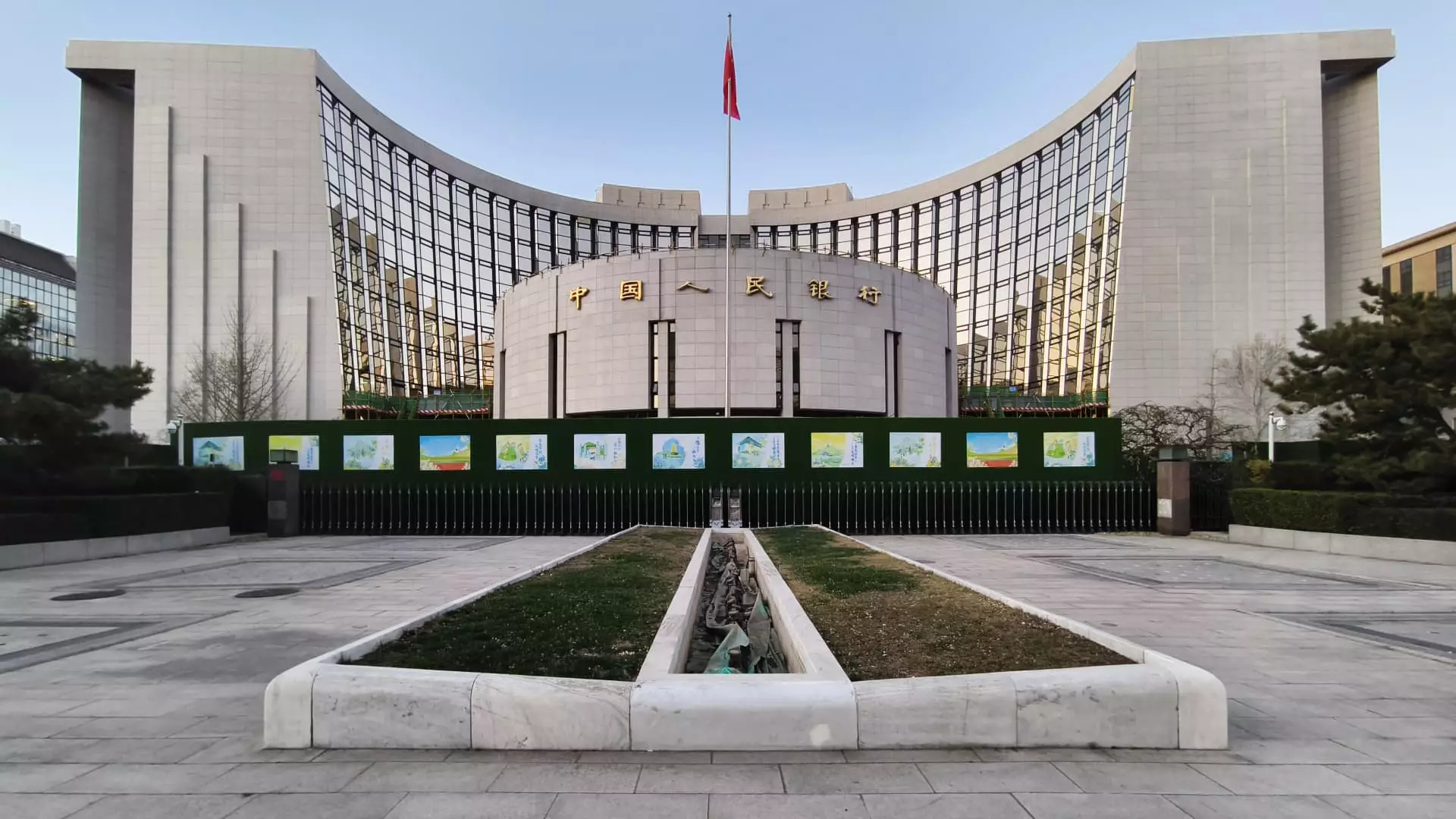China’s economic landscape is currently marred by complexities that weigh heavily on its growth trajectory. As the People’s Bank of China (PBOC) opted to maintain its benchmark lending rates following a prolonged period of uncertainty, analysts and economic observers are questioning the implications of this decision for both domestic and international economic conditions. With the one-year loan prime rate (LPR) remaining steady at 3.1% and the five-year LPR at 3.6%, the central bank’s choice signifies a strategic pause amid external pressures, particularly from shifting U.S. monetary policies.
The timing of the PBOC’s decision comes on the heels of a much-anticipated rate cut by the U.S. Federal Reserve, which signaled a more tempered approach to future rate reductions. The Fed’s recent announcement of only two potential rate cuts next year indicates a cautious outlook on U.S. economic recovery, affecting the global financial landscape. Analysts suggest that while the correlation between U.S. interest rates and the yuan exchange rate is evident, the PBOC may be adopting a ‘wait-and-see’ strategy. “It’s really a function of what rates are doing,” noted Farzin Azarm, reflecting on the broader implications for the Chinese economy and currency.
As China grapples with persistent deflation and subdued consumer demand, the government has remained committed to its objective of revitalizing growth through various monetary and fiscal measures. Recent statements from top officials underscore a willingness to intensify monetary easing—certainly, a signal acknowledging the economy’s struggles. However, the PBOC’s decision to keep lending rates unchanged has raised eyebrows, especially after the dramatic cuts implemented earlier this year, which were aimed at stimulating credit growth and investment.
Despite a series of aggressive stimulus actions in recent months, the reality on the ground shows a slow economic pulse, exacerbated by a troubled property market that poses further systemic risks. The apparent disconnect between stimulus and actual economic performance raises questions about the efficacy of monetary policy without corresponding fiscal support.
China’s ongoing battle with deflation is a critical concern, particularly as the yuan remains under pressure. With major investment institutions predicting additional depreciation next year—largely tied to global trade uncertainties—China’s leadership is under pressure to mitigate both domestic economic malaise and international currency fluctuations. The struggle with entrenched deflation proves that monetary policies employed thus far may not be sufficiently robust on their own.
Analysts like Yan Wang from Alpine Macro argue that while monetary easing is necessary, it may not be the sole avenue for robust recovery. Wang advocates for a stronger fiscal stimulus approach, noting that greater fiscal flexibility within the Chinese government could bolster growth far more effectively than interest rate adjustments alone. Such a multifaceted strategy could potentially offer a more sustainable path forward in the face of mounting economic challenges.
China stands at a crossroads as it navigates the delicate balance of fostering economic growth while contending with external pressures, particularly from the U.S. monetary policy paradigm. The PBOC’s current stance on lending rates indicates a cautious approach, yet, this must be coupled with untapped fiscal measures to generate a truly meaningful impact on the economy.
As the government and central bank continue to assess economic indicators, a comprehensive strategy that integrates both monetary and fiscal policy may prove essential. The steep hills faced by the Chinese economy reflect broader global economic challenges, and how adeptly China manages this interplay will likely shape not only its own economic future but also that of the global market in the months and years ahead. The world watches closely as this economic saga unfolds.

